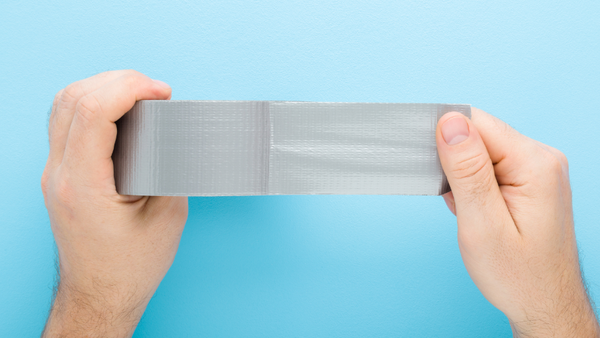The terrible truth about duct tape

Whatever you call it, however you use it, keep it away from your HVAC!
It’s hard to imagine a world without duct tape (or is it “duck”?). It’s seemingly everywhere these days, patching together everything from garden hoses to cars while also working for wallets and formal wear. But Sensi wants you to know the hard truth about duct tape: it’s horrible for air ducts.
If It Walks Like a Duck
During World War II, Johnson & Johnson created a newfangled tape designed for water resistance. Its layers of glue, mesh fabric and a top-coating of polyethylene plastic repelled moisture "like water off a duck’s back"— earning it the name “duck tape” from the soldiers deploying it.

The Tape for Every Toolbox
After the war, American consumers began hearing about “duck tape,” and they quickly embraced it for all sorts of odd jobs and fix-its. Soon it became a staple in every toolbox. But that ubiquity inevitably led to somebody somewhere using it to fix some leaky ductwork. And along the way, it came to be known as “duct tape.”
But Duct Tape Doesn’t Work On Ducts
The Lawrence Berkeley National Laboratory proved it. In 1998, they tested how various types of tape performed in sealing ducts. According to their report: “What we found was almost every product intended to be a duct sealant works—except duct tape.” In fact, using duct tape on ductwork violates building codes today in most states.
Here’s the Right Way to Seal Your Ducts
Energy Star recommends that instead of duct tape, you use a mastic duct sealant or metal-backed/foil tape to seal the seams and connections of your home’s air ducts. This demo video from the Northeast Sustainable Energy Association (NESEA) shows everything you need to know to do it yourself. Sensi has additional information on fixing home energy leaks and saving money right here.
But Wait—There’s More!
While you’re keeping the duct tape away from your ductwork, consider taking Duck Tape® to the prom. You could win a $15,000 scholarship!
